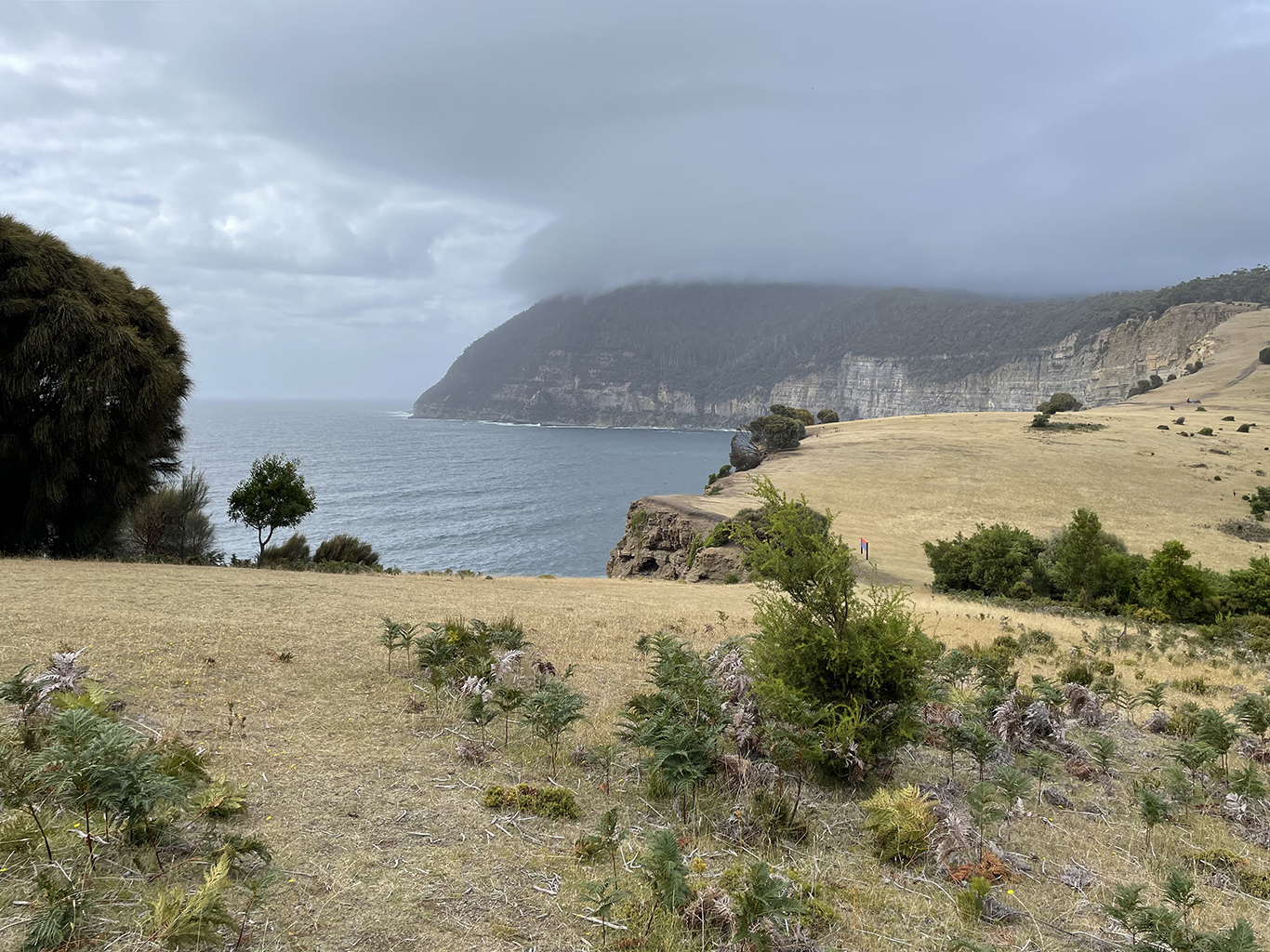
Fossil Cliffs
Wildlife, Geology and History
Maria Island | 4.5km | easy/moderate
We did this loop walk in an anti-clockwise direction, starting from the township of Darlington. We saw our first wombats of the day in Darlington, they are not at all fazed by people. Munching happily away at the grass while we snapped dozens of pics.
Following the road behind the penitentiary inland, toward the Reservoir, on the right is the Twelve Apostles, the remains of a set of old workers cottages. Only the footings and an occasional fireplace can be seen as the rest of the cottages were dismantled and moved to mainland Tasmania in the 1920’s.
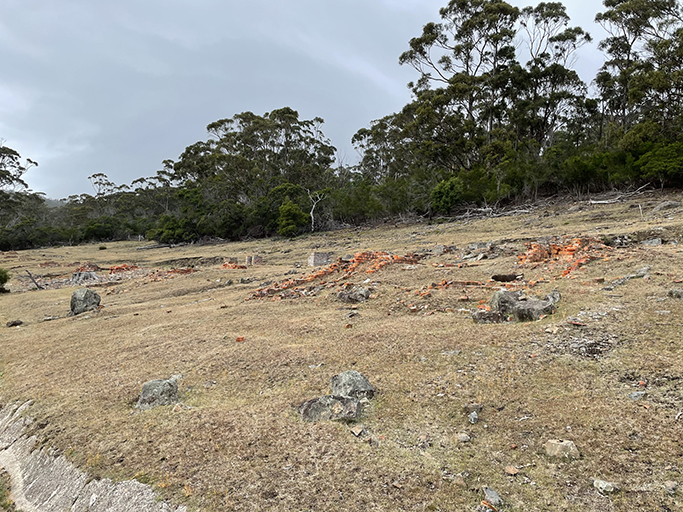
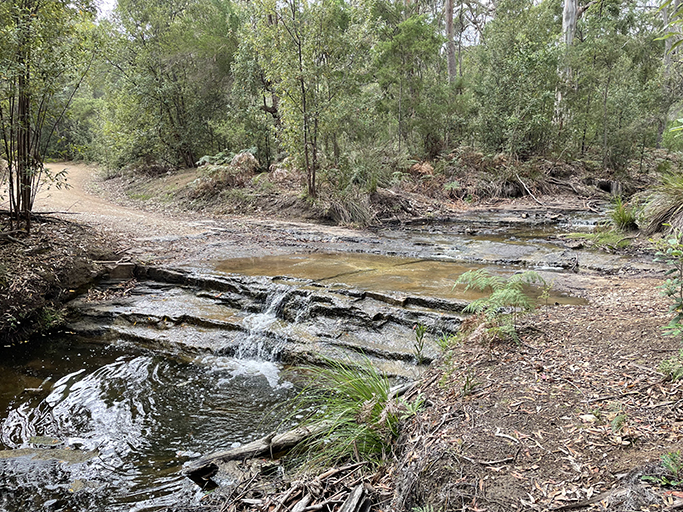
The gravel road meanders through tall forest before turning left over a small creek and heading up the steeply sloped grassland of Brickfields Valley. As we get closer to the top of Skipping Ridge we can hear the waves crashing on the rocks below, from the edge of the grassy slope you are greeted by breath taking 100m high cliffs plunging into the ocean. Beyond the sheer cliff walls to the east is the track up to Bishop and Clerk, the summit of which is shrouded in clouds today.
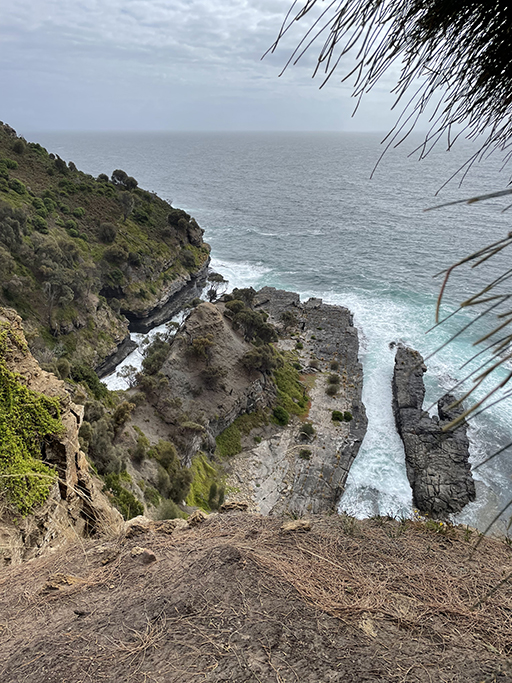
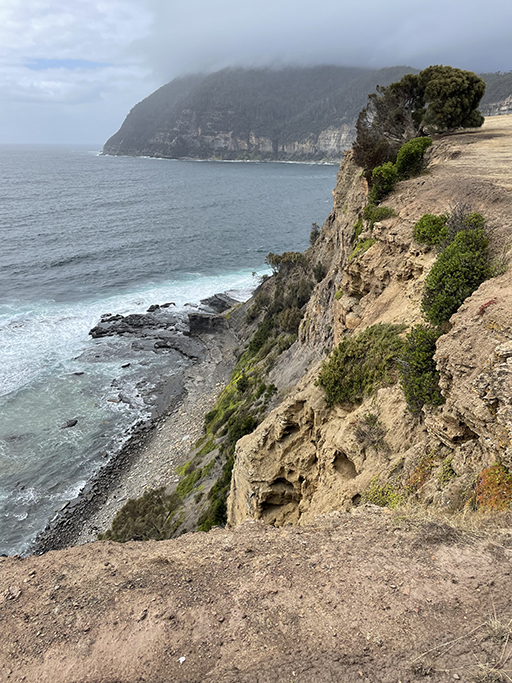

After soaking in the views for a few minutes we head up the next slope, to the left, towards the fossil cliffs rock shelf. A short steep track gives goes down to the rock shelf where you can get up close and personal with the cliff’s rock strata. You are literally surrounded by fossils around 300 million years old. Thousands of clams, sea fans, corals, and scallop shells can be seen in the cliff face. As these sea creatures died, they were deposited on the sea floor, compressed into the limestone layers and then exposed by weathering and erosion.
The convenient platform was cut out by limestone quarriers in the 1920s and even for someone who is not particularly fascinated by geology, it is impossible to not be impressed when walking over a cliff entirely made up of ancient shells. The Fossil Cliffs provide some of the most prolific and best-preserved fossils you will see in Tasmania, if not in the world.
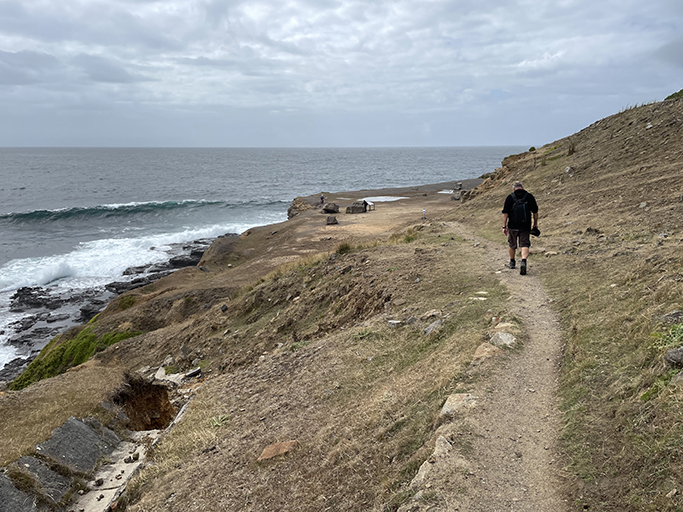
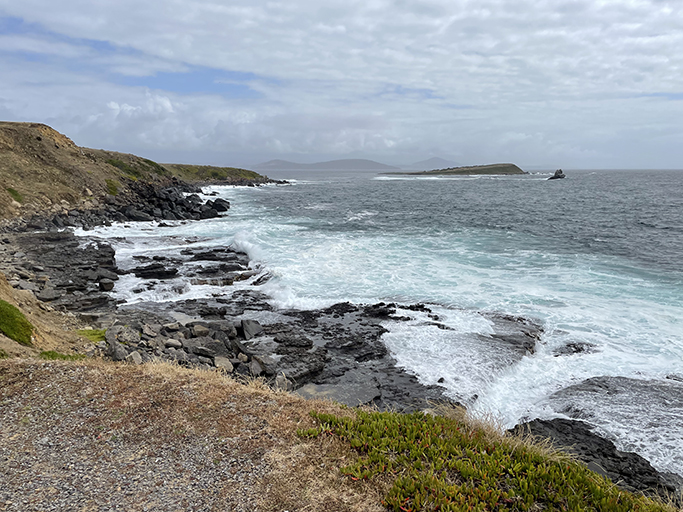
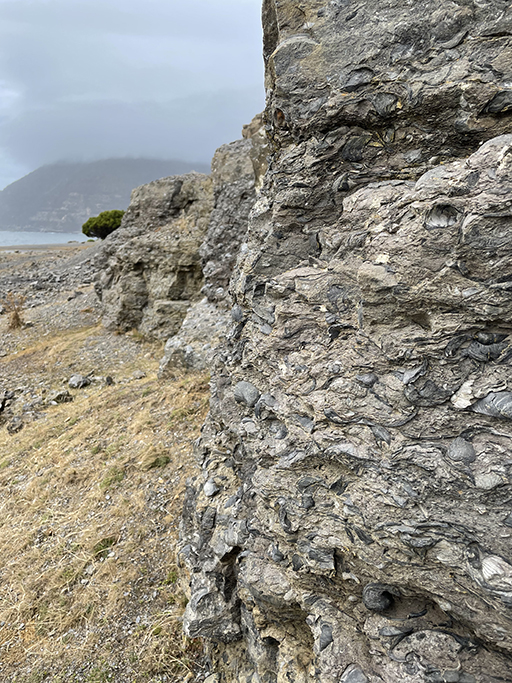
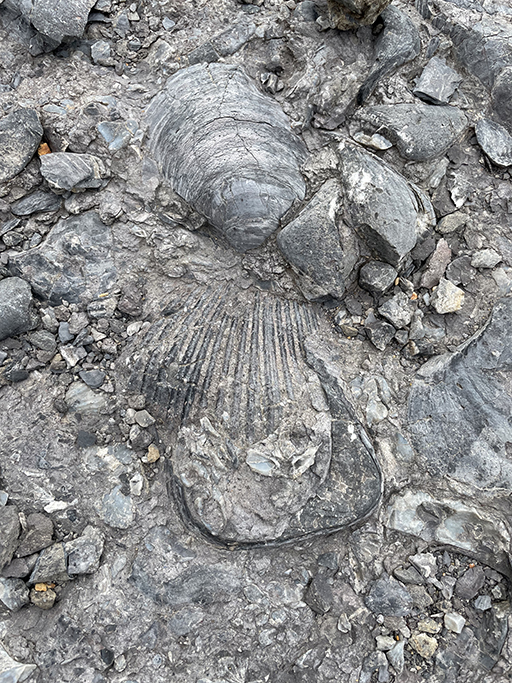
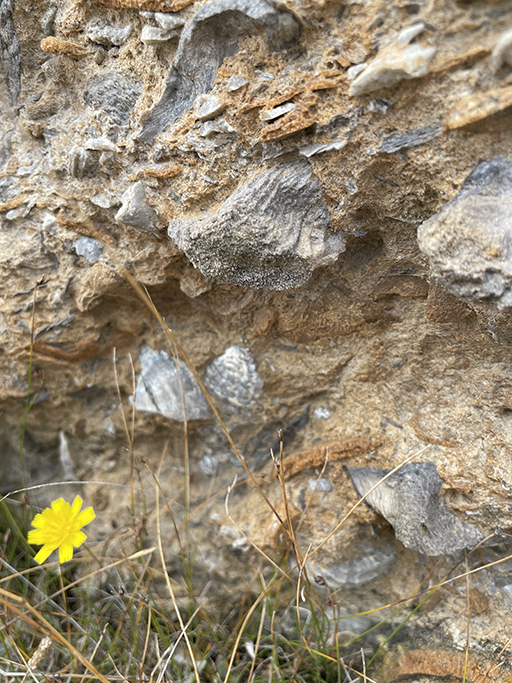
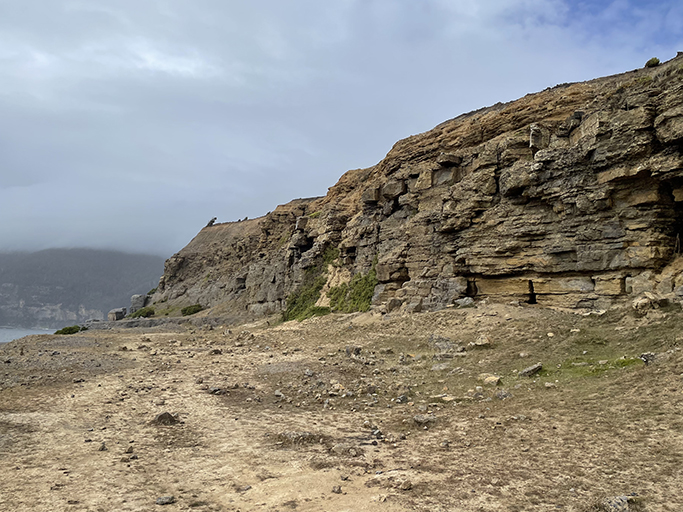

The resulting sedimentary rocks are so lime-rich that the cliffs were briefly mined for the manufacture of cement. In the early 1900 more than 150 men were employed on the island to extracting cement for the National Portland Cement Ltd. The project was ultimately unsuccessful. A combination of poor-quality limestone, remoteness, poor anchorage, and ultimately the Great Depression led to the collapse of the cement works.
For such a little island, Maria hosts an immense amount of geological diversity.
When you have had your fill of fossil hunting head back up to the top of the cliff and follow the track downhill past the airport. Keep a look out for forester kangaroos grazing on the grass slopes. High on the hill on the left is Millers Cottage and at the end of the airstrip is the cemetery. During the convict eras this cemetery was only used for free settlers, the prisoners being put in a mass grave, with one exception. A Mauri man, Hohepa Te Umuroa, fought against the British during the Maori wars of the 1840s, he was captured and accused of rebelling against the Queen’s authority. Hohepa Te Umuroa was 25 when he died of tuberculosis on Maria Island and buried in the cemetery, his remains were later returned to his homeland in 1988.
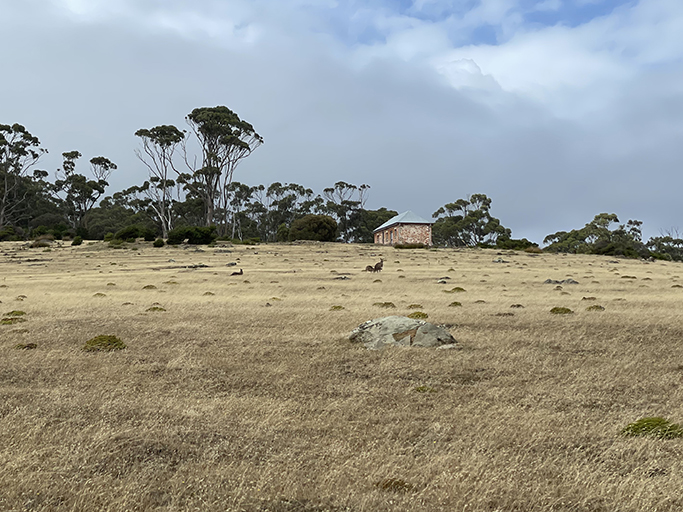
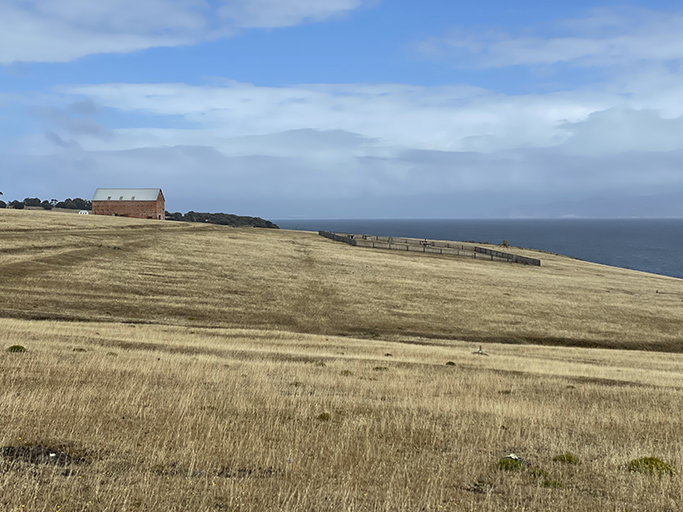
Over the road from the cemetery is the convict barn. This large building was erected as a store for agricultural produce from a nearby farm, about where the present airstrip lies.
During the 1920s it became a machine repair and carpenter’s shop for the cement company’s railway system. The barn is filled with old farm machinery and is a great photo opportunity. We also saw another wombat here, sunning himself in the long grass.
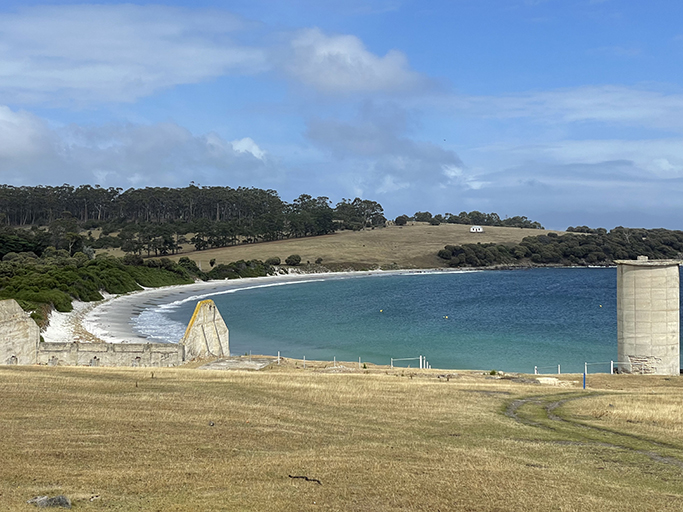
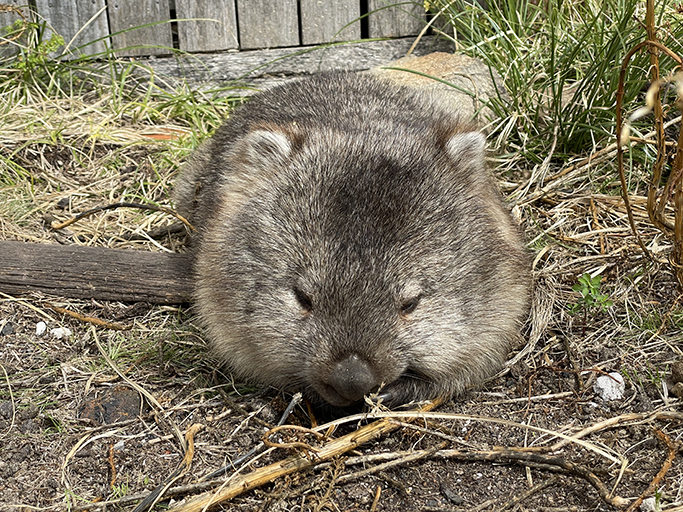
From the barn continue down to the shore past the old silos and cement works before meeting the road back to Darlington.
Fossil Cliffs is one of Tasmania’s 60 great short walks. For more short walk inspiration click here.
Good to Know
- During busy time book your ferry ticket
- You will need a Tasmania National Parks pass to visit the island
- There is no food or drink available on the island so pack everything you are going to need for your stay
- There are no cars on Maria Island so if walking isn’t your thing consider hiring a bike to get around
